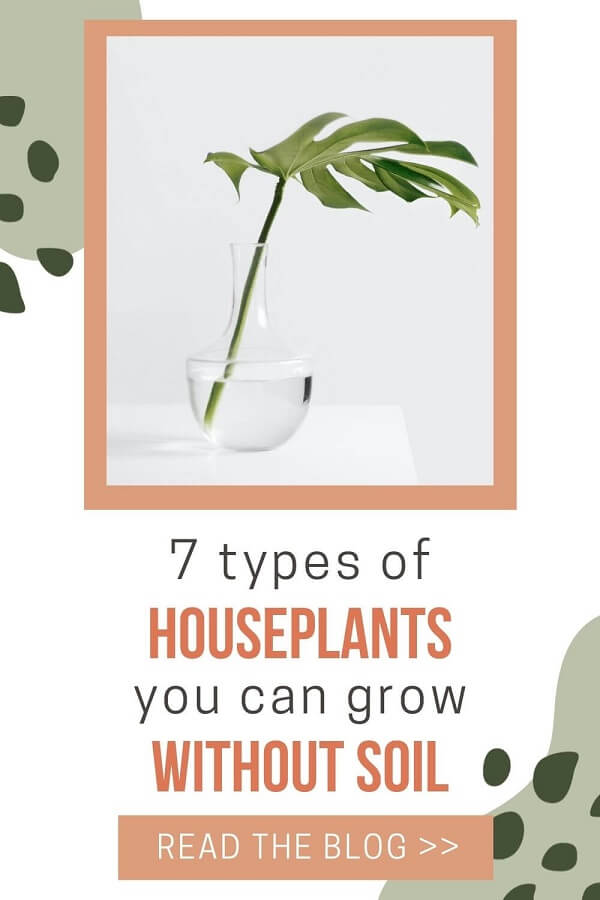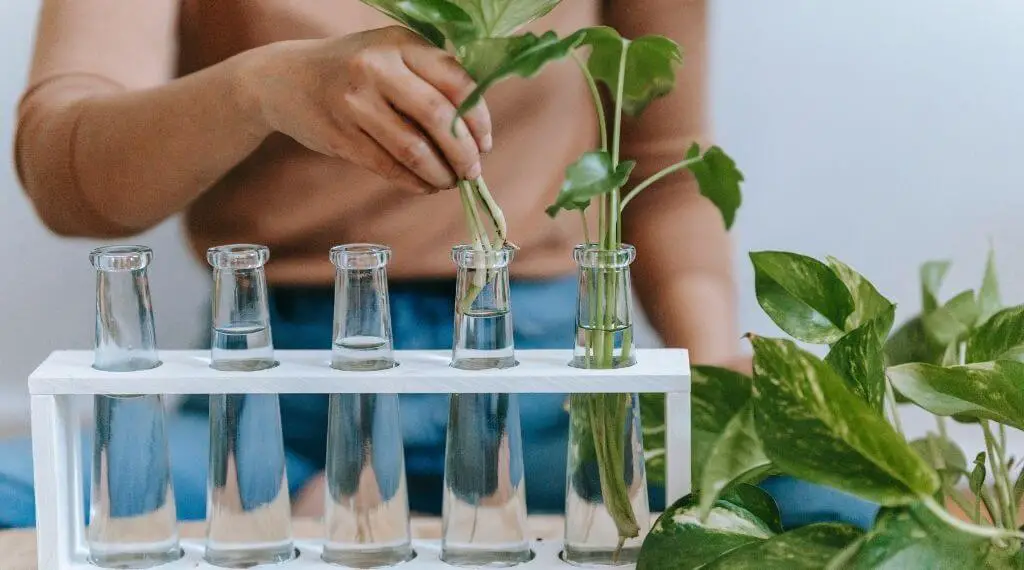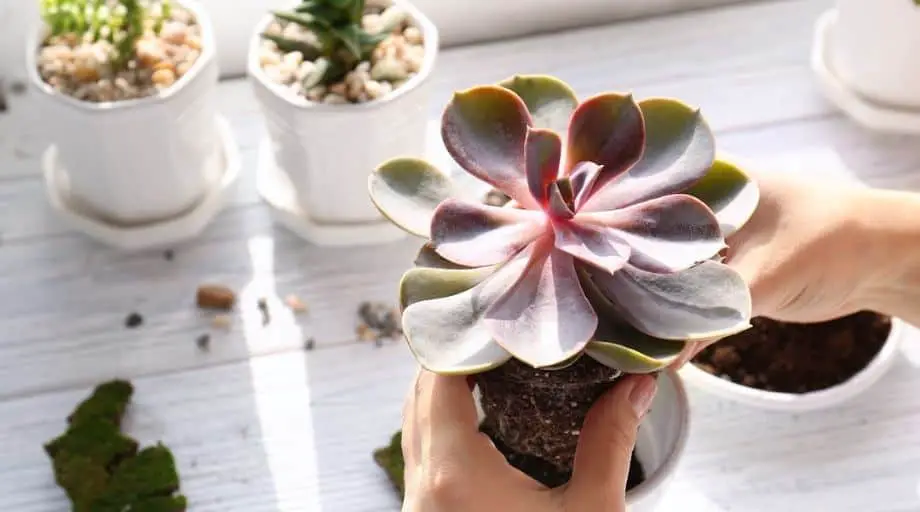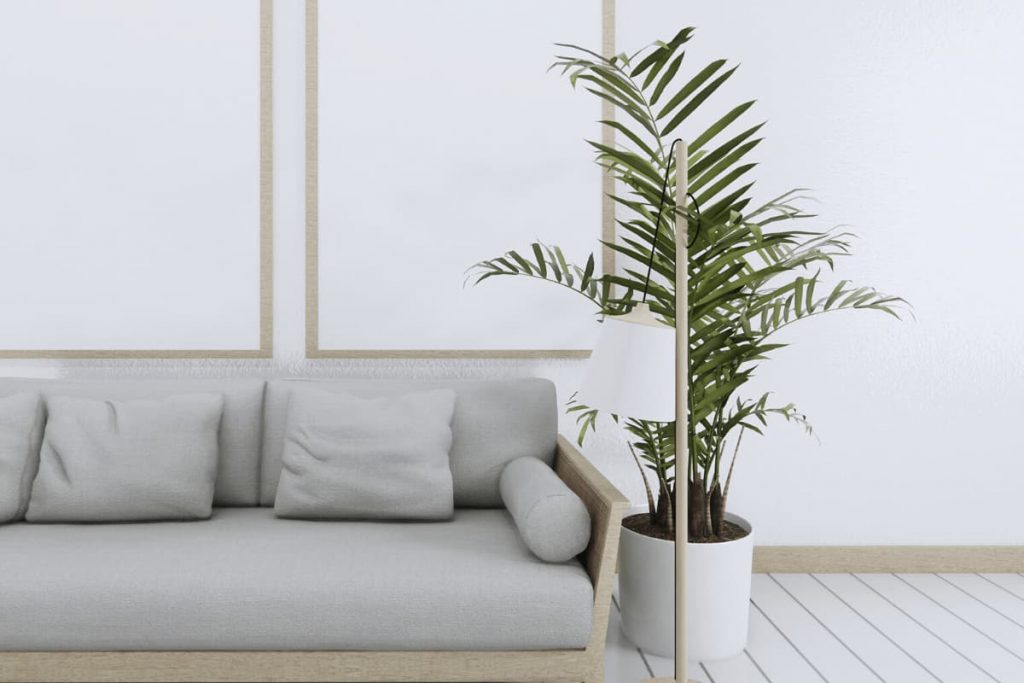Last Updated on October 5, 2021 by Plantiful Interiors
Plants That Grow In Water
Is there such a thing as plants that grow in water without soil? You’ve probably seen the Pinterest worthy pictures of living rooms with the stylish collection of lush houseplants and you envy their beauty. But, you worry about the mess.
How do they keep the dirt from spilling, or the water from overflowing? Not to mention, the insects that certain plants are sure to attract.
This post contains affiliate content. As an affiliate partner of various brands, we earn commissions on qualifying purchases, at no extra cost to you. Please read our disclaimer for more information.
Choosing to grow houseplants in water instead of soil lets you add some beautiful greenery to your living spaces without the mess.
Thankfully, there are lots of options when it comes to choosing plants that grow in water without soil.
Quick Overview Of 7 Lush Plants That Grow In Water Without Soil:
- Begonia Maculata
- Pothos
- Heartleaf Philodendron
- Orchid
- Air Plants
- English Ivy
- Lucky Bamboo
Every plant has its own unique needs in order to stay healthy and successfully grow without soil.
Below, we will cover where to make your cuttings and give you tips on how to grow plants in water. But first, let us address some of the myths associated with plants that grow in water without soil.
Myths around growing plants without soil:
Do All Plants Need Soil To Grow?
No. The soil’s main purpose is to act as a fixture for plant support and provides a way for the plant to hold and absorb moisture and nutrients.
However, not all houseplants require soil in order to grow. Turning to water culture (growing plants in water) gives you the upper hand as you will no longer need soil and will still be able to grow a beautiful plantation.
Some great benefits of ditching the dirt and growing plants in water:
- no soil spills to clean up is especially helpful if you have pets or little ones running around
- eliminate the possibility of attracting soil born insects
- reduce health related issues associated to having soil in the home
- easier to care for; less likely to overwater or underwater
Would My Plant Suffer from Root Rot?
No. Growing plants in water does mean that the plant’s roots will remain submerged in water but don’t worry, if you choose the right type of plant this will not be harmful like many people believe.
The roots will have the space necessary for storing oxygen in their outer cells which will keep them alive.
Growing plants directly in water eliminates the worry of overwatering, which is the leading cause of root rot when roots are surrounded by soil and not able to get the necessary oxygen. It also eliminates the likelihood of underwatering, which can also quickly kill a plant.
Simply keep the water topped up, doing full water changes based on the guidelines outlined below for a healthy soil-less plant.
Related Reading: How to Prevent Root Rot + Signs & Treatment of Root Rot in Potted Plants
What Type of Pot Should I Use For My Plants That Grow In Water?
If you are going to ditch the dirt and attempt to grow houseplants in water you’ll want to choose a pot that is water friendly.
Avoid metallic pots as these tend be filled with a water based nutrient solution and will leak or rust given the ongoing exposure to water.
Terracotta is another no no as it is meant to absorb water, which you do not want.
Instead, stick with glass, plastic or ceramic. A clear material will make it easy to monitor water levels and also show off the beautiful root system of your plant.
However, some plants noted below will do best in a dark colored glass which will help reduce the chances of algae growing on the roots.
Now that you know it is perfectly safe to grow certain houseplants in water, let us take a closer look at the ones mentioned above and how to successfully grow plants without soil.
7 Lush Plants That Grow In Water Without Soil
Begonia Maculata
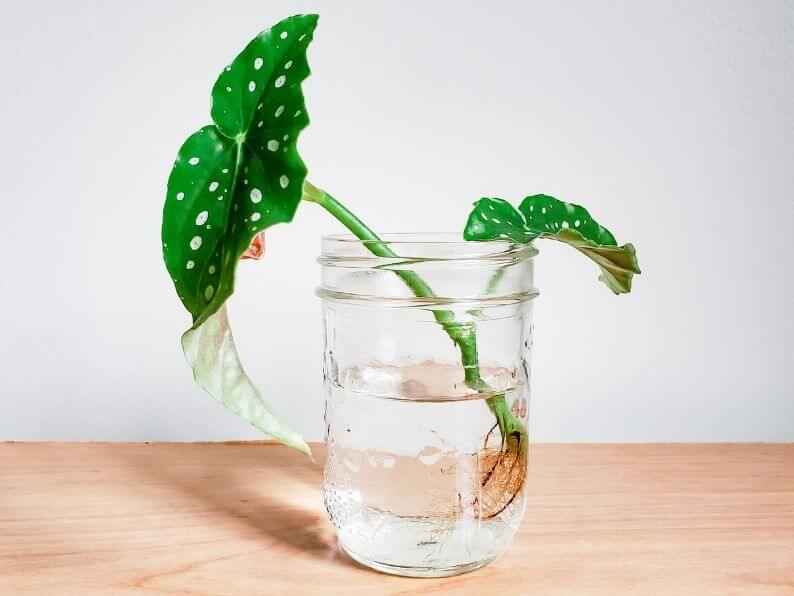
Also known as the Polka Dot Begonia, this stunning plant has wing shaped leaves with white polka dots scattered amongst green leaf tops that boast deep red undersides. A true eye-catcher.
The Begonia Maculata is a relatively fast growing plant that can get quite leggy at times. If your original plant is getting too tall, take a clipping and propagate your begonia plant in water. Display this beauty in a tall narrow glass container for a stunning centerpiece.
How to grow a Begonia Maculata in water:
- always start with a healthy plant
- take a stem cutting approximately 6 inches long with one or two leaves on it; aim for a cutting that contains nodes (little bumps where new growth occurs)
- you may need to remove lower leaves from your cutting
- new growth will form on the original plant in the same area the cutting was taken
- place your cutting in enough water to submerge the nodes; if your cutting did not have nodes use about 2-3 inches of water
- change the water every 2 weeks, topping up in between as necessary
- after about 4-6 weeks you should see roots starting to form
Plants That Grow In Water: Pothos
Pothos is another common houseplant that is super easy to grow and does quite well when grown in water.
How to grow pothos in water:
Start with about 4-6 cuttings as some may not survive as well as others.
- cut a 6 inch piece from a healthy vine that includes 3-4 nodes
- remove leaves from lower end of the stem
- choose a dark colored glass jar to prevent algae from forming
- place the leafless end into a container with enough water to cover all of the nodes
- set your pothos in an area where it will get bright indirect sunlight
- roots will start to form in about 2 weeks
- change the water weekly, topping up as needed to keep the nodes covered
- add liquid fertilizer monthly to ensure the plant is getting enough nutrients
Heartleaf Philodendron

Philodendrons are known to be one of the easiest types of plants to grow and yes, you can grow philodendrons in water. They are an excellent trailing plant that will add elegant rich greenery to your living space year round.
To grow a heartleaf philodendron without soil you will need to:
- take a 6 inch cutting about ¼ below a node from a healthy plant
- strip away any bottom leaves; place the cut end of the vine into a vase of enough water to cover the nodes
- display your new vine in an area where it will get bright, indirect sunlight
- do a complete water change every 7 days
- monitor the moisture level, if your home runs on the dry side you may need to top up in between water changes to keep the nodes submerged
Plants That Grow In Water: Orchids
Orchids are colorful flowering plants that are known for their elegance and beauty and come in an array of colors. The root system on orchids takes about 6 weeks to fully develop when growing without a growing media
Orchids are typically potted in peat moss or bark when purchased from a garden center and can be a little tricky to switch to a water method but not impossible. Be careful not to damage any of the roots as you remove the orchid from its original growing media.
Here is a great video that shows exactly how to convert an orchid to water culture:
To summarize the steps in the video:
- give the roots a good soak to help loosen them from their existing potting material
- gently wiggle the plant loose from the pot and carefully pull the moss or bark off of the roots as much as possible
- soak the roots (just below the crown) for 5-10 minutes to remove any remaining pieces of moss; repeat as necessary changing out the water each time
- cut off any existing rotted roots
- choose a container that will accommodate the roots and leave enough room for them to continue to grow without being overcrowded, orchid roots are thick and bulky compared to other plants mentioned
- keep the water level in your container to the bottom of the orchid stem
- complete a full water change once per week
Air Plants
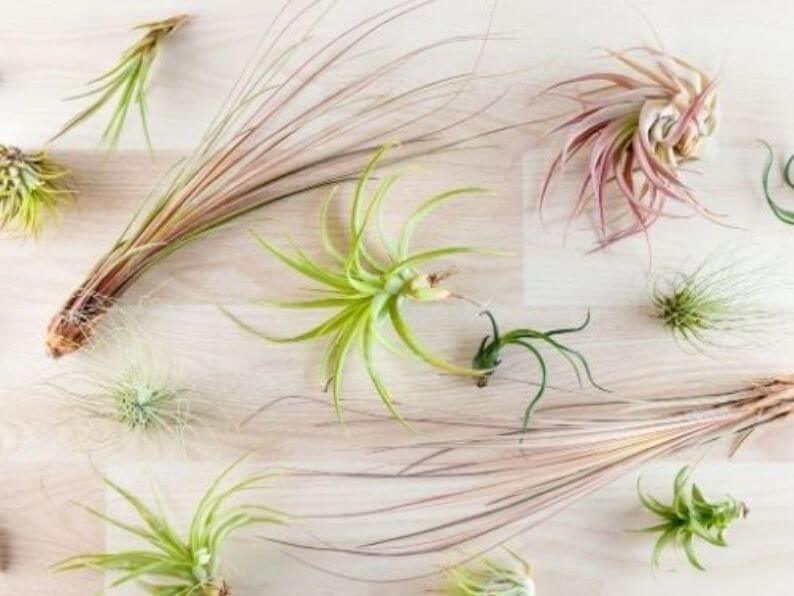
Air plants are unique and absorb moisture through their leaves. They do not require soil and are low maintenance, making air plants really easy to care for.
These plants don’t even require a pot! There are so many creative ways to display air plants throughout your home for visual appeal.
When it comes to watering your air plants there are two options:
- Air Plant Bath: Submerge your air plants in water for 6-12 hours once per week to see the fullness of your air plants return. After their bath, gently shake any excess water off so they do not drip onto your surfaces.
- Misting Air Plants: This method requires you to spray your air plants using a spray bottle. This will need to be done regularly to keep your air plants fully hydrated. If you can, mist your air plants over a sink or towel to eliminate the risk of water stains or damage to your surfaces.
If you’re up for a DIY project, check out this simple air plant tutorial and make your own funky upside down hanging air plant containers.
Related Reading: Air Plant Care Q&A
English Ivy
One of the most common types of houseplants is the classic English Ivy. This indoor vine grows quickly and looks stunning sprawled across a shelving unit or drooping over a hanging pot tucked inside a vintage macrame holder.
English Ivy can be propagated by stem cuttings that are placed in water to grow.
- cut a 4-6 inch section that has lots of leaves from a healthy vine
- strip the leaves off the bottom 2 inches
- place the leafless end into your chosen container, filling it with water to cover the section that does not have any leaves
- nodes will form where leaves were stripped away and new growth will begin from these areas
- change the water every 2 weeks
- top up the water in between changes as necessary
- roots should start to develop in about 4-6 weeks
Lucky Bamboo
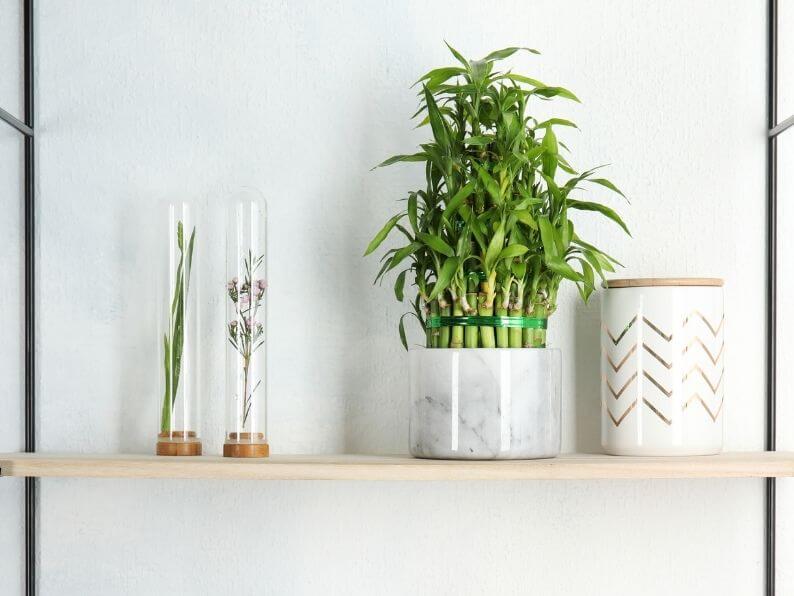
Lucky Bamboo is a great way to add a little Feng Shui to any room and is said to represent happiness and good luck. Lucky bamboo prefers moderate, indirect light; make sure not to place it directly in front of a window.
Lucky bamboo is often sold pre-potted amongst small pebbles which takes the guesswork out of choosing a pot.
If you plan to create your own bamboo display, here’s how to do it:
- choose a pot that is twice the diameter as the root ball
- place a layer of stones at the bottom of the pot to create a drain area so that the roots aren’t sitting in excess water.
- place the rooted end of the bamboo in your pot and fill it with stones or colored marbles to keep the stem steady
- cover the stones with distilled water.
- top up the water as it evaporates, you’ll be able to tell by the weight of your pot
- do a complete water change every two weeks for best results
Wrapping Up Plants That Grow In Water
Start Growing Houseplants In Water Today!
If you’ve been holding off on adding some live greenery to your home decor because of the mess, I hope this article has provided you with a clean alternative.
Livening up your home with some houseplants is sure to bring good positive vibes to your space, something we could all use a little more of.
Get your new plants delivered straight to your door from our favorite plant sellers:
FrondandFolia on Etsy
BelleDecorDesigns on Etsy
Costa Farms on Amazon
Shop Succulents on Amazon
Bloomscape Independent Retailer
